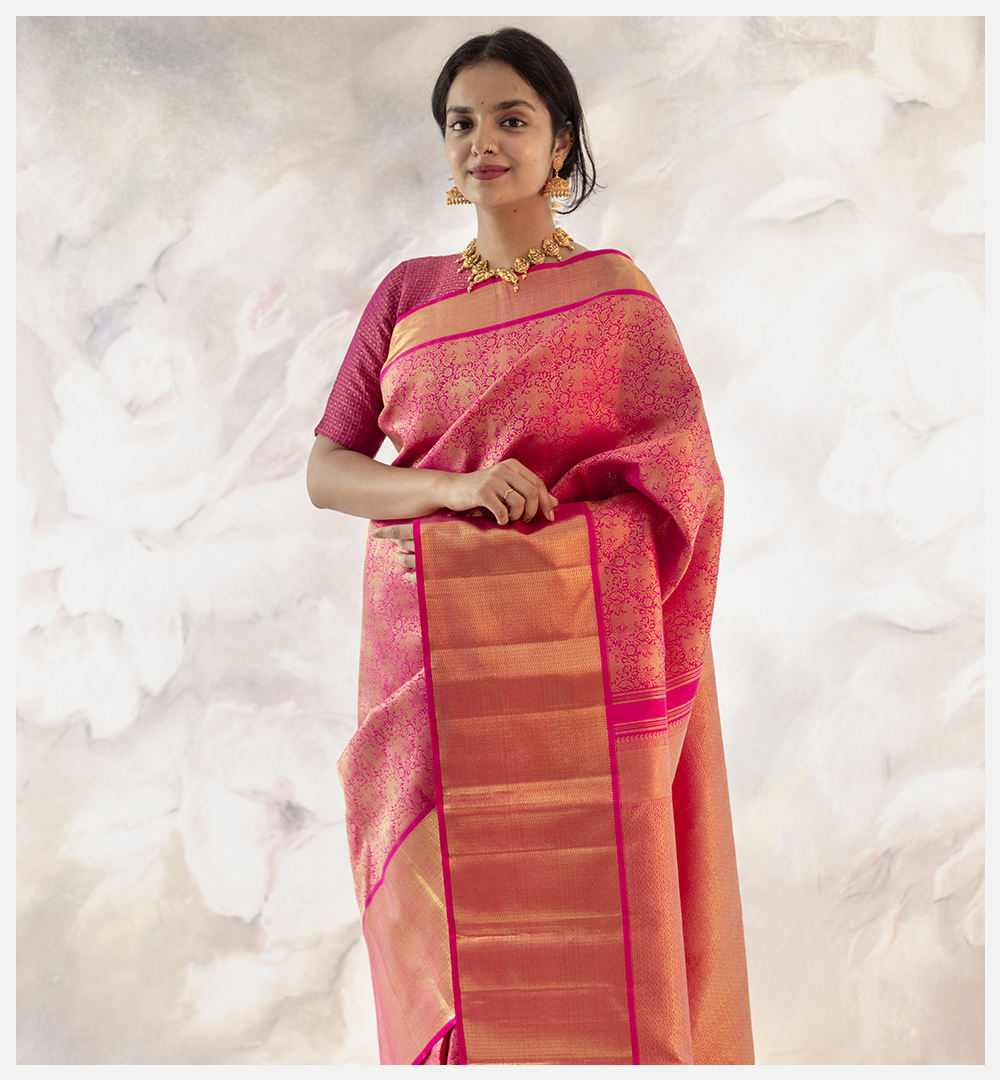Varalakshmi Vratham and The Golden Hues of Prosperity
The Origins
Varalakshmi Vratam is a divinely auspicious festival celebrated in South India to usher in ‘Mahalakshmi’, the Goddess of prosperity, into our homes and hearts. It is observed on the full moon (Pournami) day in the Indian month of Shravan (July to August) specifically in the southern states of Tamil Nadu, Karnataka, Telangana, and Andhra Pradesh (Vara Mahalakshmi Vratham). Married women observe a number of austerities on this day to appease the Goddess and draw from the spirit of abundance that she symbolises. Every household is filled with the fervour of devotion to this bounteous Goddess, the sonorous chanting of the lovely mantras, the mellifluous chime of brass bells, the fragrance of dhoop and agarbattis wafting all over, and the radiance of silver lamps – all these elevate the soul to cosmic heights.
The Set Up
The observances start the previous day itself, with the invocation chant and the “Sthapana of the Kalash”. This is an elaborate ritual involving filling the Kalash with rice, pulses, jaggery, nuts, and aromatic spices. Mango leaves and a coconut placed at the mouth of the Kalash form the base for the “Mugham’’ (face) of the Goddess to be fixed on. The Kalash is then decorated with resplendent Kanchipuram silk sarees, diamantine jewellery, colourful flowers, and decorative torans. The final result is the beauteous face of Mahalakshmi sitting on a Kalash and clad in gorgeous silk yardage of a saree, exuding grace and benevolence to the ardent devotee.
The Method
The pooja paraphernalia (chandan, kumkum, akshata, betel leaves, supari, flowers) are all gathered in big trays and kept handy. The threshold of Devima is decorated with a rangoli/kolam made of rice powder and lamps are lit in front of the Kalash to create a divine ambiance. The austerities start with a Ganesha puja seeking Lord Ganesha's grace for the smooth conduct of the pooja. Then the Kalash pooja is followed by Varalakshmi pooja performed by offering various “Upacharas”: Gandha (scent), Pushpas (flowers), Dhoop (camphor), Deep (lamp), and Neivedya (food offering). Lakshmi Ashtottara chanting is then done followed by the tying of the sacred thread. Last comes the Tamboolam amboolam The pooja paraphernalia (chandan, kumkum, akshata, betel leaves, supari, flowers) are all gathered in big trays and kept handy. The threshold of Devima is decorated with a rangoli/kolam made of rice powder and lamps are lit in front of the Kalash to create a divine ambiance. The austerities start with a Ganesha puja seeking Lord Ganesha's grace for the smooth conduct of the pooja. Then the Kalash pooja is followed by Varalakshmi pooja performed by offering various “Upacharas”: Gandha (scent), Pushpas (flowers), Dhoop (camphor), Deep (lamp), and Neivedya (food offering). Lakshmi Ashtottara chanting is then done followed by the tying of the sacred thread. Last comes the Tamboolam which is the distribution of gifts to the guests, to share the spirit of giving.
The Goodies
Womenfolk set out to markets for purchase and markets are abuzz with shoppers during this festival time. A cornucopia of fruits, banana leaves, betel leaves and flowers (rose, mogra, champa, chameli, lotus, ketaki) presents a dazzling, delightful sight in the marketplace which overflows with the abundance of the season. Grocery shopping also gathers steam with long lists of items to be purchased for the preparation of a variety of goodies for the pooja. The Neivadyam consists of sweet Pongal, Vadai, Sundal, Kozhakkatai, Payasam, Chitrannam, and Panchamritam - all kinds of flavourful gustatory delights to tickle our taste buds. And last, but absolutely never least - the saree
The Celebration
The purest and grandest of silk sarees are worn by women to celebrate Varalakshmi Vratam with ceremonial pomp and splendour. The joy of dressing is an art; that too donning a Tulsi Madras silk saree for a ritual-rich occasion like Varalakshmi puja enhances the dressing up experience itself. After all, Shrigara (dressing up oneself with aesthetics) is one of the primordial “Rasas” and wishing to look beautiful for the supreme Goddess is an act of bhakti by itself.


